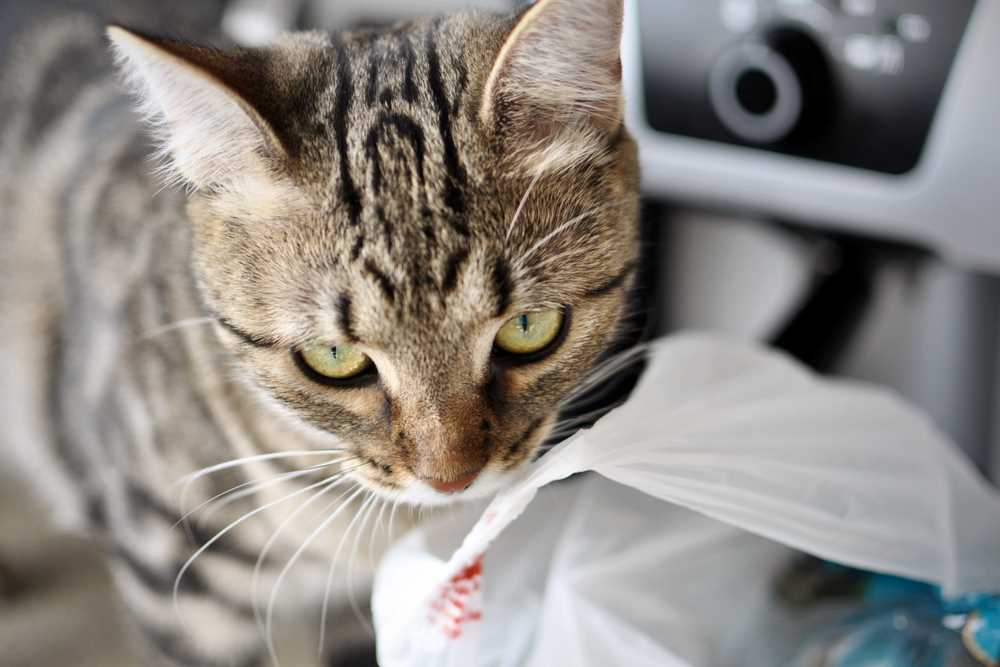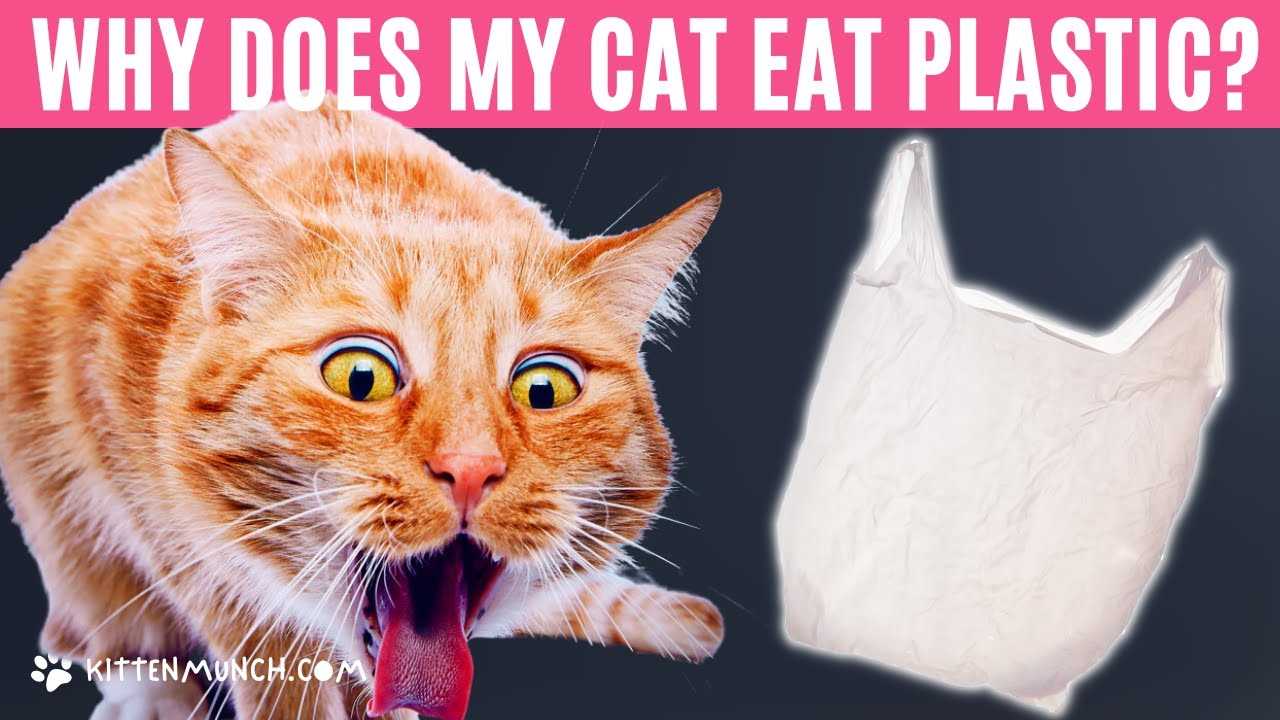As a curious Scottish Fold, I often find myself drawn to unusual objects around the house, and plastic is one of my favorites. My human might wonder why I can’t resist chewing on those colorful bags and wrappers. The truth is, my attraction to these materials often stems from instinct and environmental factors. Many felines, like myself, have a natural urge to explore our surroundings using our mouths, treating various textures as toys or snacks.
Another reason for my peculiar behavior could be boredom. Without enough stimulation or engaging toys, I turn to alternative sources of entertainment, including those pesky plastic items. To keep me happy and distracted, my human should provide a variety of interactive toys, puzzles, or even engage in playtime. This keeps my mind active and reduces my interest in non-food items.
Furthermore, some of my friends have shared that their humans should consider the possibility of nutritional deficiencies. Sometimes, I might be seeking certain minerals or nutrients missing from my diet. A trip to the vet can help determine if my diet needs adjusting to ensure I’m getting everything I need.
Lastly, it’s essential for my human to keep plastic items out of my reach. While my fascination may seem harmless, ingesting plastic can lead to serious health issues. Being proactive about creating a safe environment for me can prevent any potential accidents and keep me content.
Understanding the Attraction to Synthetic Materials
It’s not uncommon for us furry companions to show interest in items that aren’t meant for us. When it comes to synthetic materials, there are a few reasons behind this curiosity. Here’s what I’ve observed:
- Texture Appeal: The feel of certain plastics can be intriguing. Some surfaces are crinkly or smooth, which may stimulate our senses.
- Flavor Residues: Sometimes, the remnants of food or interesting scents can linger on these materials, prompting a taste test.
- Boredom: A lack of engaging toys or activities can lead to exploring unconventional objects. Providing stimulating alternatives helps reduce this behavior.
Health Implications to Consider
While the allure of these materials is strong, there are potential health risks involved:
- Digestive Issues: Consuming non-food items can lead to blockages or other gastrointestinal problems. If any signs of discomfort appear, a trip to the vet is necessary.
- Toxicity Risks: Certain plastics can release harmful chemicals. Always ensure that items within reach are safe and non-toxic.
Being aware of these factors helps in creating a safer environment. Keeping an eye on what’s accessible and providing plenty of appropriate distractions can make a big difference in my life and in the lives of fellow whiskered companions.
Common Reasons for Attraction to Plastic

Sometimes, it’s the texture that catches my interest. The crinkly sound or the smooth surface makes me curious. Many of us felines are drawn to materials that feel different under our paws or teeth.
Scent and Flavor
- Some plastics hold onto scents from food items, making them appealing.
- The taste of certain plastics can mimic flavors I find appealing, leading to nibbling.
- Leftover food particles on bags or wrappers can tempt me, creating a desire to explore further.
Playfulness and Boredom
- When playtime is lacking, I often seek out alternatives to entertain myself.
- Plastic items can become makeshift toys, providing stimulation through movement and sound.
- Rustling bags or crunchy wrappers can trigger my hunting instincts, turning a mundane object into an exciting challenge.
Understanding these factors can help guardians make adjustments to keep us safe and entertained, steering us away from potentially harmful materials.
Health Risks Associated with Plastic Consumption
Consuming plastic can lead to serious health issues. Ingested materials may cause gastrointestinal blockages, leading to vomiting, lethargy, and even requiring surgical intervention. Observing unusual behavior or signs of discomfort is crucial. Prompt veterinary attention can prevent complications.
Potential Toxicity
Certain plastics contain harmful chemicals, including phthalates and bisphenol A (BPA). These substances can disrupt hormonal balance, resulting in long-term health problems. Regular exposure increases the risk of developing chronic conditions, affecting overall well-being.
Dental Damage
Chewing on synthetic materials can lead to dental fractures or wear. Maintaining dental health is vital, as damaged teeth can cause pain and necessitate costly treatments. Providing appropriate chew toys can help redirect this behavior.
Monitoring for any signs of distress or health changes is essential. If ingestion occurs, consult a veterinarian immediately for tailored advice and intervention strategies.
How to Identify Plastic-Eating Behavior in Cats
Monitor for signs such as chewing, licking, or swallowing items made of plastic. If you notice your furry friend engaged in these actions, it’s a clear indication of this unusual habit. Pay attention to the frequency and intensity of the behavior–daily occurrences or obsessive tendencies should raise concern.
Behavioral Indicators
Observe your pet’s body language. If there is an increase in excitement or fixation on plastic objects, it may suggest a strong attraction. Look for any changes in their play patterns; if they prefer plastic over their usual toys, it’s significant. Additionally, keep track of any noises made while interacting with plastic–sniffing, pawing, or even vocalizing might indicate a deeper interest.
Environment and Triggers
Identify areas where plastic is accessible. If your companion frequently roams around places with plastic bags or wrappers, consider relocating these items. Create a distraction with engaging toys, such as the best cat toys for multiple cats, to shift focus away from plastic. Be mindful of any stressors in the environment that could lead to this behavior; changes in routine can prompt unusual habits.
Lastly, maintain a clean space. Ensure that laundry items, like those in the best european washing machine, are stored properly, reducing exposure to plastic materials. Taking these steps can help mitigate unwanted chewing habits.
Tips to Deter Your Feline Friend from Chewing on Plastic

Introduce interactive toys filled with enticing catnip. This keeps attention away from forbidden objects while stimulating play.
Maintain a clutter-free environment. Store plastic items securely in cabinets or containers, preventing access to tempting materials.
Use bitter-tasting sprays designed for deterring pets. A quick application on plastic surfaces can discourage unwanted nibbling.
Provide alternatives like chew toys or dental chews. These satisfy the urge to chew without risking health.
Establish a routine that includes regular play sessions. Engaging activities help reduce boredom and distract from undesirable items.
Monitor and Redirect Behavior
When I observe my human reaching for plastic, I pounce on a toy instead. This redirection reinforces positive behavior while minimizing temptation.
Encourage curiosity with puzzle feeders. These stimulate mentally while offering a safe outlet for exploration.
Positive Reinforcement
Reward good behavior with treats or praise. Acknowledging moments of disinterest in plastic reinforces preferred actions.
Consider consulting a veterinarian if the fixation persists. Professional advice can provide tailored solutions for specific habits.
Alternative Chew Toys for Cats
Try offering natural rubber toys. They come in various shapes and textures, providing an engaging experience that satisfies the urge to chew. Look for ones designed specifically for felines to ensure safety and durability.
Consider sisal rope toys. These are great for gnawing and help keep claws healthy. They come in different designs, from balls to mice, adding variety to playtime.
Soft fabric toys filled with catnip can be enticing as well. The combination of texture and scent can divert attention from undesirable targets. Ensure they are non-toxic and machine washable for easy maintenance.
Interactive toys that dispense treats or kibble can also be beneficial. They stimulate both chewing and problem-solving skills, keeping minds active while satisfying the need to gnaw.
Homemade options like frozen fruit or vegetable treats can be refreshing and safe alternatives. Just ensure they are safe for consumption, as not all fruits and veggies are suitable for feline friends.
Lastly, durable dental chews can help maintain oral hygiene while providing a satisfying chew experience. Always check for vet-approved products to ensure they meet health standards.
When to Consult a Veterinarian
Immediate veterinary attention is necessary if you notice any of the following symptoms: vomiting, lethargy, loss of appetite, or unusual behavior. These signs may indicate an obstruction or toxicity resulting from ingesting non-food items.
Signs of Serious Issues
Observe for the following alarming indicators:
| Symptom | Action |
|---|---|
| Repeated vomiting | Contact your vet immediately. |
| Severe lethargy | Visit the clinic as soon as possible. |
| Refusal to eat for more than 24 hours | Schedule an appointment right away. |
| Signs of distress or pain | Seek immediate veterinary care. |
Preventive Health Checks
Regular check-ups are beneficial, especially if ingestion of foreign materials is a recurrent issue. Your veterinarian can provide guidance on behavioral modifications and rule out underlying health conditions.
Understanding the Psychological Factors Behind This Behavior
Many furry companions exhibit peculiar habits, and for some, the attraction to synthetic materials is puzzling. The urge to chew on such items may stem from instinctual behaviors. Engaging with textures that differ from typical toys can provide sensory stimulation. For instance, the crinkling sound of a plastic bag may mimic the rustle of prey, igniting hunting instincts.
Additionally, boredom often plays a significant role. Lively playtime is essential, and without adequate engagement, the search for novel experiences may lead to unusual choices. Providing interactive toys can alleviate this issue, redirecting attention to more suitable items.
Stress and anxiety can also contribute to this fixation. A change in the environment, such as a new pet or moving to a different home, might trigger coping mechanisms. Creating a safe and stable environment can help reduce these feelings. Regular routines and familiar surroundings offer comfort, minimizing anxiety-driven behaviors.
Some might have nutritional deficiencies that prompt them to seek out non-food items. Ensuring a balanced diet rich in essential nutrients can diminish the urge to consume inappropriate materials. Consult a veterinarian to assess dietary needs and make adjustments if necessary.
Lastly, certain breeds exhibit more pronounced tendencies towards chewing and exploring textures. Understanding the unique characteristics of one’s breed can aid in addressing these behaviors. Tailoring play and enrichment activities to suit these traits fosters healthier habits.
FAQ:
Why does my cat seem to be obsessed with chewing on plastic?
Cats may chew on plastic for various reasons. One common explanation is that they are attracted to the texture and sound of the material. The crinkly noise that plastic bags make can mimic the sounds of prey, stimulating their hunting instincts. Another reason could be boredom or anxiety; some cats chew on non-food items as a way to relieve stress or entertain themselves. If your cat is frequently chewing on plastic, it might be helpful to provide them with more toys or engage them in interactive play to redirect their behavior.
Is it harmful for my cat to eat plastic, and what should I do if I catch them doing it?
Yes, eating plastic can be harmful to cats. Ingesting plastic may lead to gastrointestinal blockages, which can be serious and require veterinary attention. If you catch your cat chewing on or eating plastic, it is important to remove the plastic from their reach immediately. Monitor your cat for any signs of distress, such as vomiting, lethargy, or changes in appetite. If you notice any concerning symptoms or if your cat has swallowed a significant amount of plastic, contact your veterinarian promptly for advice on the next steps.









